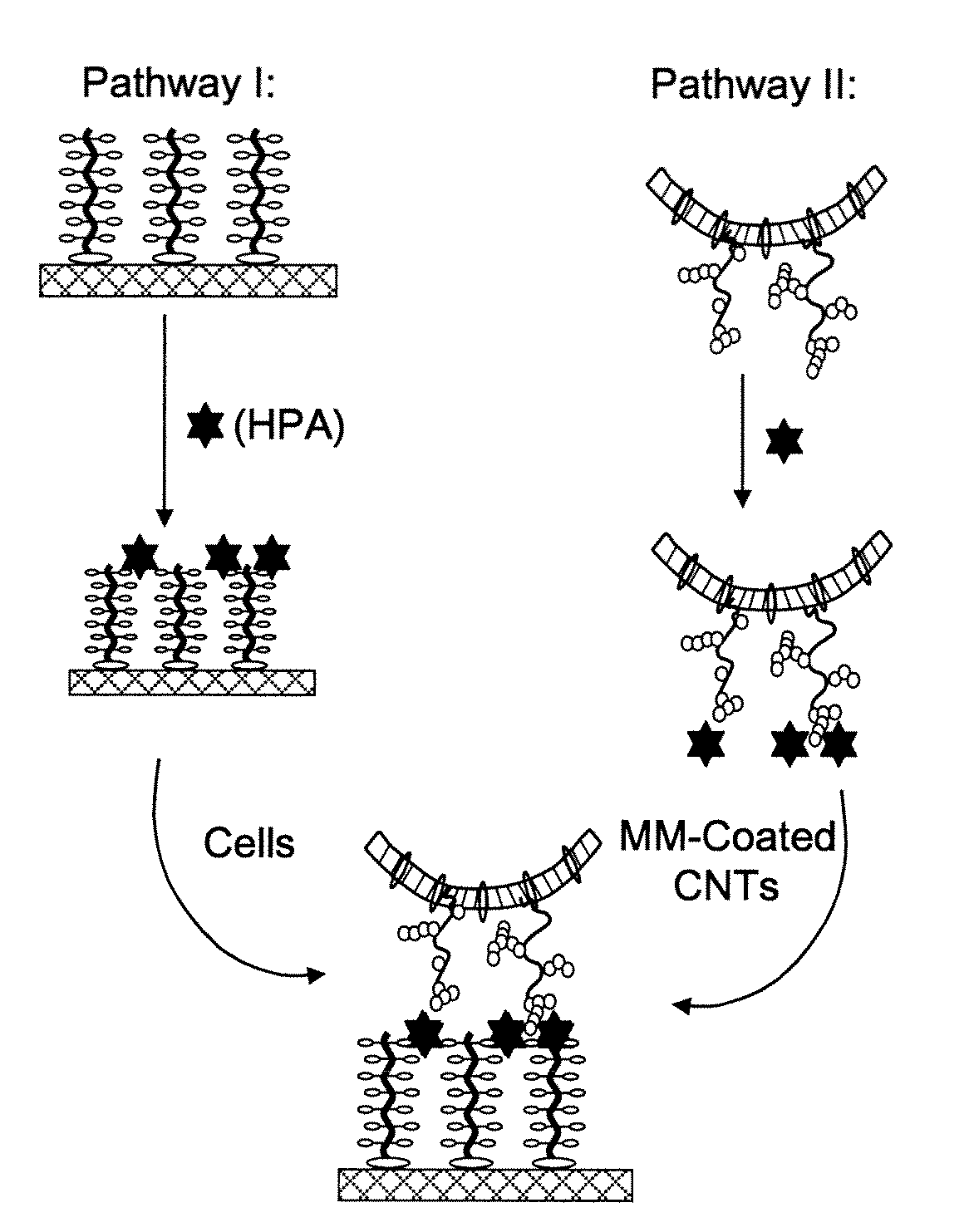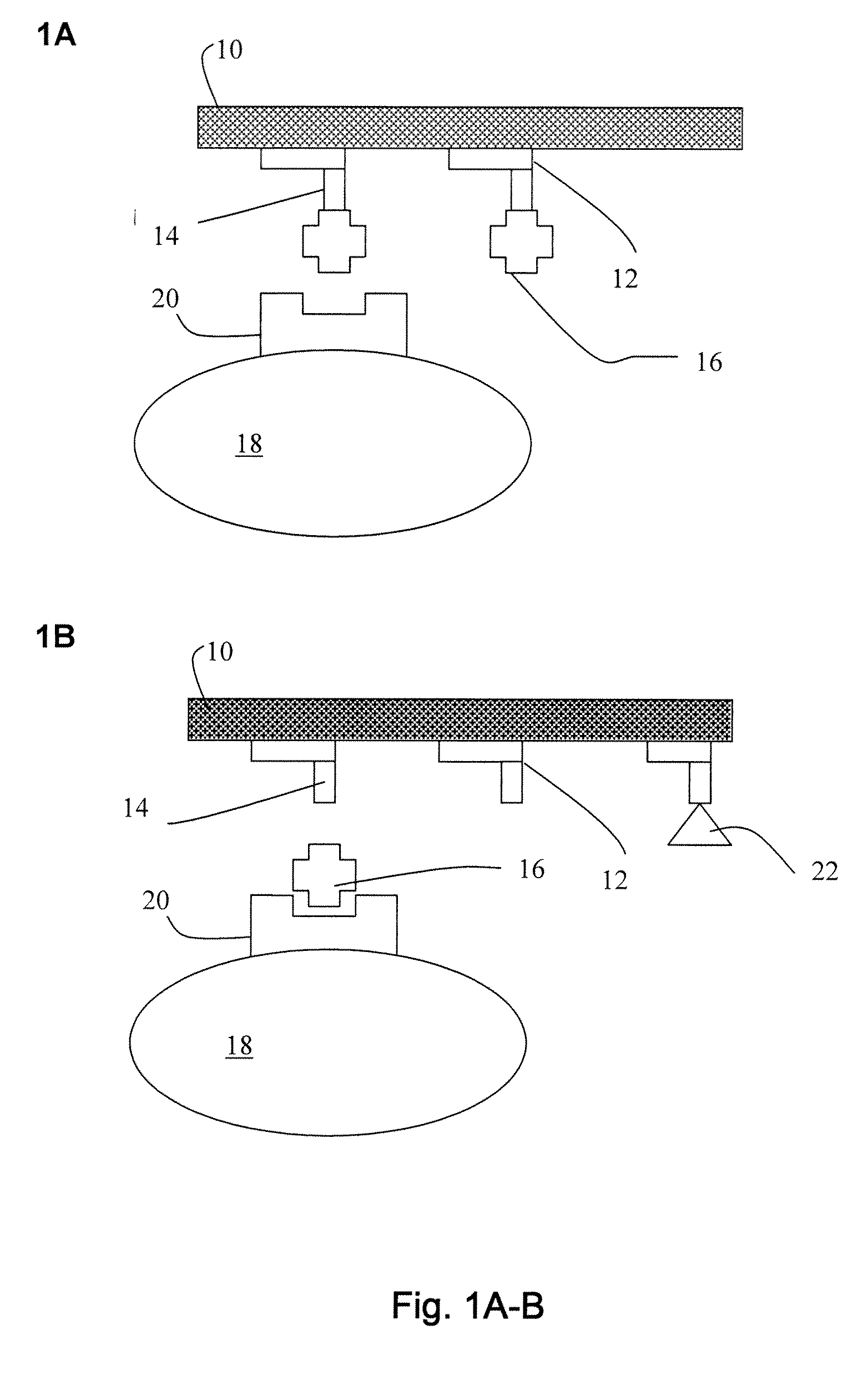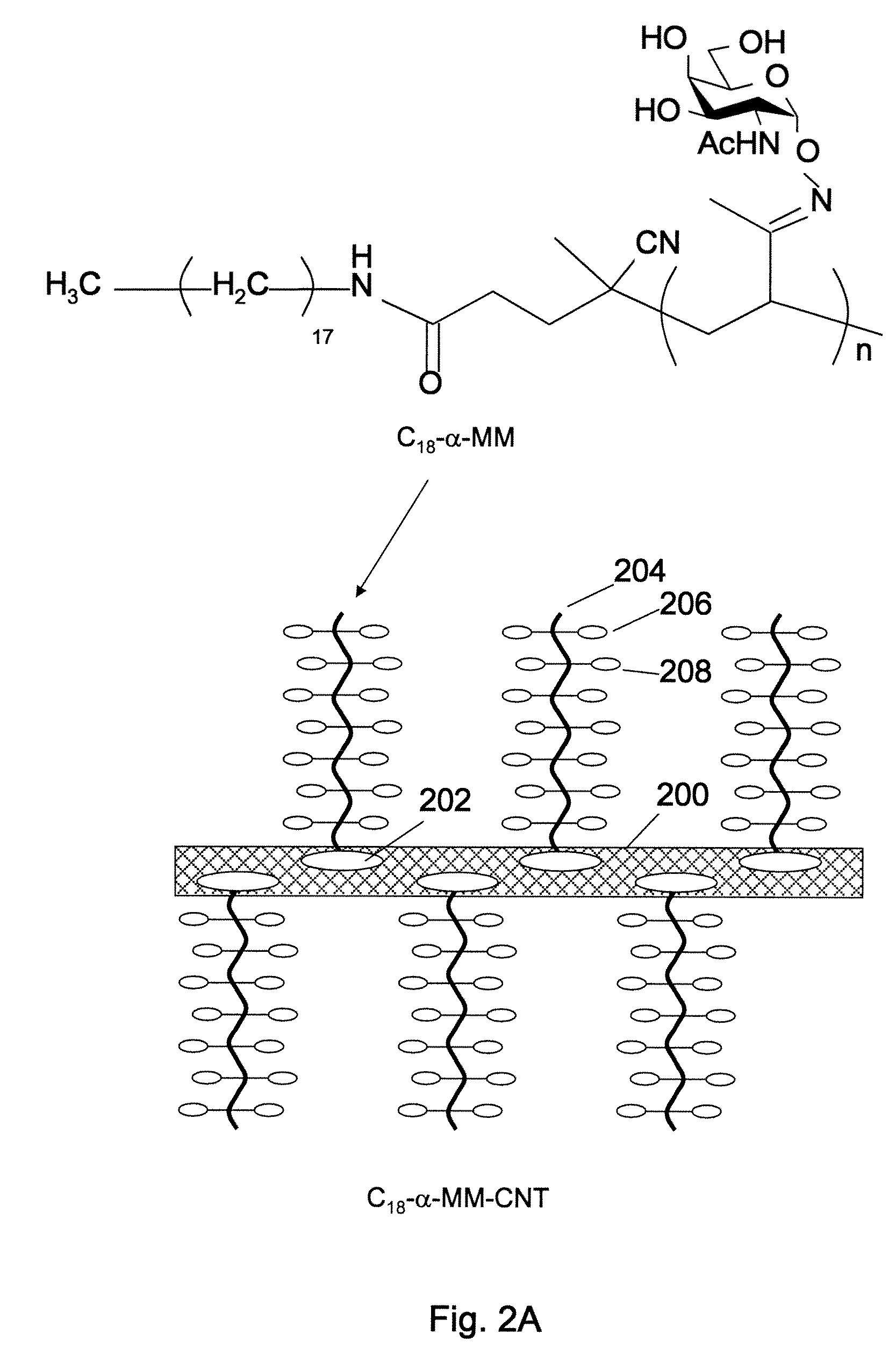Interfacing Nanostructures to Biological Cells
a technology of nanostructures and biological cells, applied in the field of nanostructures, can solve the problems of severe limitations imposed by the cytotoxicity of cnts on their use in biological systems, and non-specific interactions
- Summary
- Abstract
- Description
- Claims
- Application Information
AI Technical Summary
Problems solved by technology
Method used
Image
Examples
example 1
Synthesis of Labeled C18-α-MM-CNTs
[0104]The synthetic procedure for C18-terminated, α-GalNAc-conjugated mucin mimics (C18-α-MMs) and C18-terminated, β-GalNAc-conjugated mucin mimic (C18-β-MM) was described previously in the inventors' Angew. Chem. paper, referenced above. Synthetic procedures were as follows:
Synthesis of C18 Functionalized Mucin Mimics with α-GalNAc Residues (C18-α-MMs).
Synthesis of C18-Tailed Initiator (C18-ACPA):
[0105]To a solution of 4,4′-azobis(4-cyanopentanoic acid (ACPA) (0.591 g, 2.11 mmol) in anhydrous CH2C12 (100 mL) in the dark at rt were added EDC (1.62 g, 8.44 mmol), DMAP (0.258 g, 2.11 mmol), Et3N (1.20 mL, 8.61 mmol), and octadecylamine (2.28 g, 8.44 mmol). The reaction mixture was stirred overnight at rt. The reaction mixture was diluted with CH2Cl2 and washed with saturated NaHCO3 (aq.), water, and brine. The organic layer was dried over anhydrous MgSO4. After evaporation of the solvent, the residue was separated by column chromatography (1:4 EtOAc / h...
example 2
Preparation of Suspensions
[0110]High-purity single-walled carbon nanotubes (SWCNT) (HiPCO, >95%) were purchased from Carbon Nanotechnologies Inc., and high-purity multi-walled carbon nanotubes (MWNTs) (CVD, >95%) were purchased from Nanolab. In a typical preparation experiment, 1 mg of as-produced carbon nanotubes was suspended in 5 mL of aqueous C18-MM solution (0.1%˜0.5%). The mixture was sonicated using a water-bath sonicator for 1 h. First, insoluble material was removed by low-speed centrifugation at 3,000×g for 30 min, and the product suspension was decanted from the insoluble material. Then the excess free glycopolymer was removed by dialysis of the suspension in a polycarbonate membrane against deionized water for 24 h. The resulting C18-MMNTs (C18-α-MM-SWNTs, C18-β-MM-SWNTs, C18-α-MM / TR-SWNTs, C18-β-MM / TR-SWNTs, C18-α-MMMWNTs, C18-β-MM-MWNTs, C18-α-MM / TR-MWNTs, C18-β-MM / TR-MWNTs) formed stable suspensions in aqueous solution. The concentrations of the resulting suspensions ...
example 3
Preparation of Complex of HPA-FITC Bound C18-MM-CNTS (Pathway I in FIG. 2B):
[0111]In this example a lectin preparation is bound to a glycosylated nanostructure prior to contact with a tissue.
[0112]Helix pomatia agglutinin conjugated with fluorescein isothiocyanate (HPA-FITC) was obtained from EY-Laboratories. A 1-mL solution of HPA-FITC (100 μg / mL) in buffer (0.10 M Tris, and 0.15 M NaCl, pH 8.0) was added to the suspensions of mucin mimic-coated nanotubes (C18-α-MM-CNTs or C18-β-MM-CNTs) in H2O (1 mL). An additional 0.5 mL of buffer was added and the reactions were incubated for 1 h at rt in the dark. After incubation, the solutions were all subjected to dialysis against the buffer for 48 h. The dialyzed solutions were analyzed at 510-550 nm using a fluorescence microplate reader (excitation wavelength 492 nm). The concentrations were calculated as described above. The characterized solutions were then used for cell surface binding experiments.
PUM
| Property | Measurement | Unit |
|---|---|---|
| Fluorescence | aaaaa | aaaaa |
| Toxicity | aaaaa | aaaaa |
Abstract
Description
Claims
Application Information
 Login to View More
Login to View More - R&D
- Intellectual Property
- Life Sciences
- Materials
- Tech Scout
- Unparalleled Data Quality
- Higher Quality Content
- 60% Fewer Hallucinations
Browse by: Latest US Patents, China's latest patents, Technical Efficacy Thesaurus, Application Domain, Technology Topic, Popular Technical Reports.
© 2025 PatSnap. All rights reserved.Legal|Privacy policy|Modern Slavery Act Transparency Statement|Sitemap|About US| Contact US: help@patsnap.com



